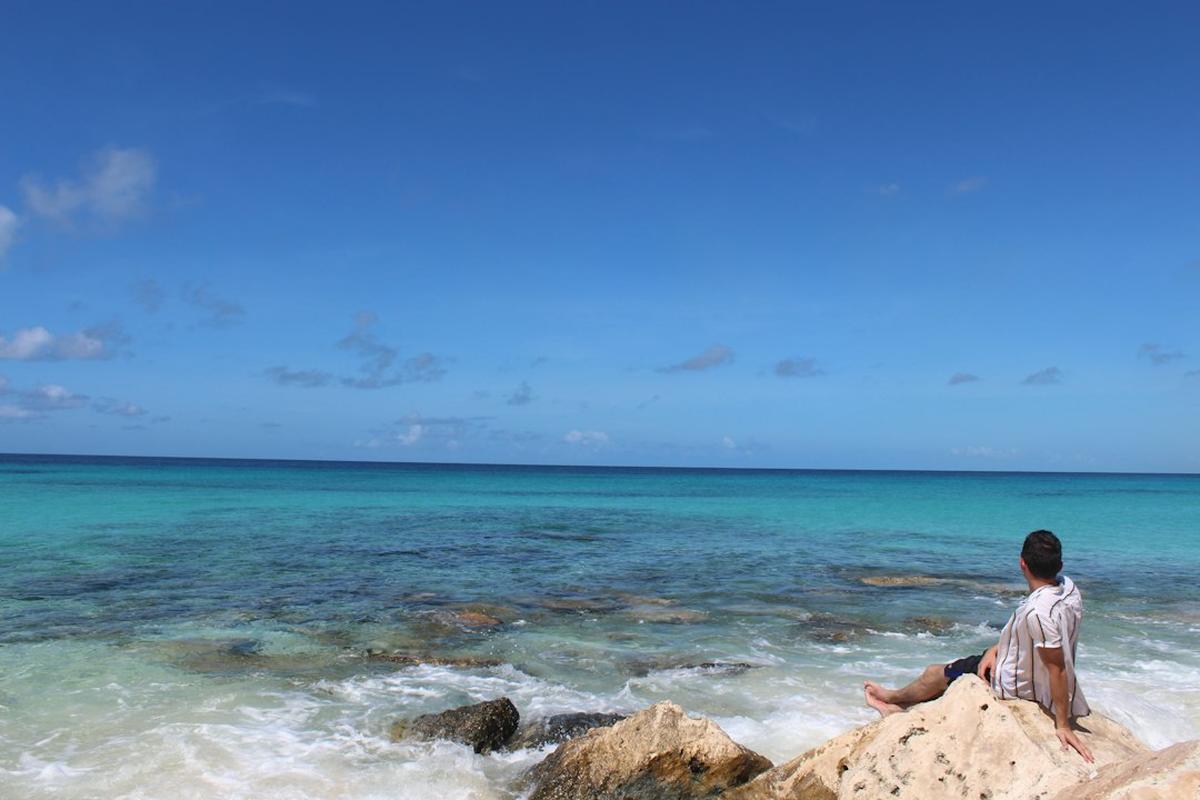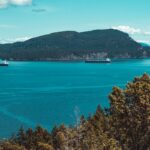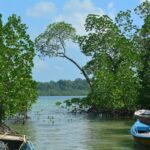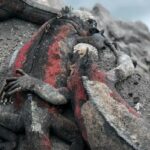Brief Overview of the Galapagos Islands
The Galapagos Islands, a volcanic archipelago in the Pacific Ocean, is renowned for its unique wildlife and rich biodiversity. This cluster of islands, made famous by Charles Darwin’s evolutionary studies, is a UNESCO World Heritage site and a magnet for nature enthusiasts from around the globe.
Significance of Smell in Understanding a Place
When we explore a new place, we engage all our senses. Sight and sound are often given precedence, but the sense of smell provides a unique perspective, creating a vivid and enduring memory of a place. Smell has the power to transport us back to a moment in time, making it an essential aspect of our travel experiences.
The Sea Scent of the Galapagos
The Oceanic Aroma: Its Source and Significance
The first scent that greets you upon arriving at the Galapagos is the crisp, briny aroma of the sea. This smell is a combination of various factors, including the ocean’s salt content, marine life, and the presence of seaweed. It’s a refreshing scent that sets the tone for the natural wonders that await on the islands.
Impact of Sea Smell on Local Flora and Fauna
The oceanic aroma of the Galapagos has a significant impact on the local flora and fauna. Many animals, such as the Galapagos sea lion and various bird species, rely on this scent for navigation and locating food sources. Similarly, the unique vegetation of the islands has adapted to thrive in the salty environment.
The Humidity Factor
How Humidity Influences the Smell of the Galapagos
Humidity plays a crucial role in shaping the smellscape of the Galapagos. The high humidity levels intensify the aromas, making them more potent and noticeable. The damp, earthy smell of the rainforest, the fragrant blooms, and even the scent of the ocean are amplified due to the islands’ humid climate.
The Role of Climate Change in Altering Humidity Levels
Climate change is altering the humidity levels in the Galapagos, which in turn, is affecting the islands’ smellscape. Rising temperatures are leading to increased evaporation, intensifying the humidity and the potency of the smells. This change could have far-reaching implications for the islands’ ecosystem and biodiversity.
The Tropical Fragrance of the Galapagos
The Unique Flora Contributing to the Tropical Smell
The Galapagos Islands are home to a variety of unique flora that contributes to the islands’ tropical fragrance. The scent of blooming flowers, such as the passionflower and the Galapagos cotton, mingles with the aroma of endemic plants like the Palo Santo tree, creating a delightful tropical bouquet.
How the Tropical Smell Enhances the Island’s Biodiversity
The tropical smell of the Galapagos plays a crucial role in enhancing the islands’ biodiversity. Many insects and birds are attracted to the fragrant flowers, aiding in pollination and seed dispersal. This interaction between the flora and fauna contributes to the islands’ rich biodiversity.
The Salty Spray: A Signature Scent
Understanding the Origin of the Salty Spray Smell
The salty spray smell is another signature scent of the Galapagos. This aroma originates from the sea spray produced by the crashing waves, which carries microscopic particles of salt and marine life into the air. It’s a refreshing scent that embodies the raw, untamed beauty of the islands.
The Influence of Salty Spray on the Galapagos Ecosystem
The salty spray smell influences the Galapagos ecosystem in several ways. It helps certain bird species navigate and locate food sources. Additionally, the salt particles in the spray contribute to the nutrient content of the soil, supporting the growth of the islands’ unique vegetation.
The Stinky Side of the Galapagos
Identifying the Sources of Unpleasant Smells
While the Galapagos Islands are filled with pleasant aromas, they also have their share of unpleasant smells. These can originate from various sources, such as decomposing seaweed, bird guano, or the musky scent of the Galapagos tortoise.
The Impact of These Smells on Tourism and Wildlife
While these smells might be off-putting to some visitors, they are an integral part of the islands’ ecosystem. They play a crucial role in nutrient cycling and provide essential cues for animal behavior. Understanding this can enhance tourists’ appreciation of the islands’ complex and interdependent ecosystem.
The Role of Smell in the Galapagos Ecosystem
How Smell Contributes to Animal Behavior and Survival
Smell plays a crucial role in the behavior and survival of the Galapagos’ wildlife. Many animals rely on their sense of smell for various activities, such as finding food, identifying mates, and avoiding predators. For instance, the Galapagos sea lion uses its keen sense of smell to locate fish, while the blue-footed booby relies on smell to recognize its mate.
The Interplay Between Smell and the Island’s Unique Biodiversity
The interplay between smell and the islands’ unique biodiversity is fascinating. The diverse smells of the Galapagos, from the fragrant flowers to the pungent guano, create a complex olfactory landscape that influences the behavior and interactions of the islands’ wildlife, contributing to their unique biodiversity.
Smell as a Part of the Galapagos Experience
Personal Accounts of the Galapagos Smell
Many visitors to the Galapagos recount the islands’ smell as a memorable part of their experience. The combination of the salty sea, tropical flowers, and earthy rainforest creates a unique olfactory experience that stays with them long after their visit.
How Smell Enhances the Tourist Experience
Smell enhances the tourist experience by providing a deeper connection to the environment. It offers a unique perspective on the islands’ biodiversity and ecosystem, making the visit more immersive and memorable. The smell of the Galapagos is as much a part of the islands’ charm as its stunning landscapes and unique wildlife.
The Changing Smellscape of the Galapagos
The Impact of Human Activity on the Galapagos Smell
Human activity is changing the smellscape of the Galapagos. Pollution, invasive species, and climate change are altering the islands’ unique smells, impacting the ecosystem and biodiversity. For instance, the introduction of non-native plants can change the islands’ floral fragrance, affecting pollinators and disrupting the ecosystem.
Conservation Efforts to Preserve the Islands’ Unique Smellscape
Conservation efforts are underway to preserve the unique smellscape of the Galapagos. These include measures to control pollution, eradicate invasive species, and mitigate the impacts of climate change. By preserving the islands’ smellscape, we can safeguard their unique biodiversity and ensure that future generations can enjoy the enchanting aroma of the Galapagos.
Conclusion
Recap of the Role of Smell in Understanding the Galapagos
The role of smell in understanding the Galapagos is profound. From the refreshing scent of the sea to the fragrant tropical flowers, the islands’ unique smellscape offers a rich sensory experience that enhances our understanding and appreciation of this unique ecosystem.
The Future of the Galapagos Smellscape
The future of the Galapagos smellscape depends on our actions today. By understanding the importance of smell in the islands’ ecosystem and biodiversity, we can make informed decisions to protect and preserve this unique olfactory landscape for future generations.
Frequently Asked Questions
What is the most common smell in the Galapagos?
The most common smell in the Galapagos is the crisp, briny aroma of the sea, followed by the scent of the islands’ unique flora.
How does smell contribute to the Galapagos’ biodiversity?
Smell contributes to the Galapagos’ biodiversity by influencing animal behavior and plant-pollinator interactions. Many animals rely on their sense of smell for finding food, identifying mates, and avoiding predators, while many plants rely on their fragrance to attract pollinators.
How is climate change affecting the smell of the Galapagos?
Some of the unpleasant smells in the Galapagos include decomposing seaweed, bird guano, and the musky scent of the Galapagos tortoise.
What are some of the unpleasant smells in the Galapagos?
Some of the unpleasant smells in the Galapagos include decomposing seaweed, bird guano, and the musky scent of the Galapagos tortoise.
How does human activity impact the smell of the Galapagos?
Human activity, such as pollution and the introduction of non-native species, can alter the Galapagos’ unique smells, impacting the ecosystem and biodiversity.
What are some conservation efforts to preserve the Galapagos’ smellscape?
Conservation efforts to preserve the Galapagos’ smellscape include measures to control pollution, eradicate invasive species, and mitigate the impacts of climate change.
References:
- Darwin, C. (1859). On the Origin of Species. London: John Murray.
- Grant, P. R., & Grant, B. R. (2008). How and Why Species Multiply: The Radiation of Darwin’s Finches. Princeton University Press.
- Trueman, M., & d’Ozouville, N. (2010). Characterization of the Galapagos terrestrial climate in the face of global climate change. Galapagos Research, 67, 26-37.
- Steadman, D. W., & Ray, C. E. (1982). The relationships of Megaoryzomys curioi, an extinct cricetine rodent (Muroidea: Muridae) from the Galapagos Islands, Ecuador. Smithsonian Contributions to Paleobiology, 51, 1-23.








